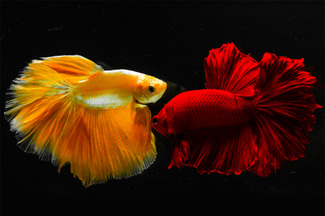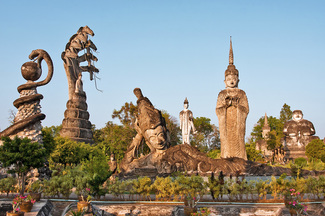DUSIT – BANGKOK’S OASIS OF TRANQUILITY
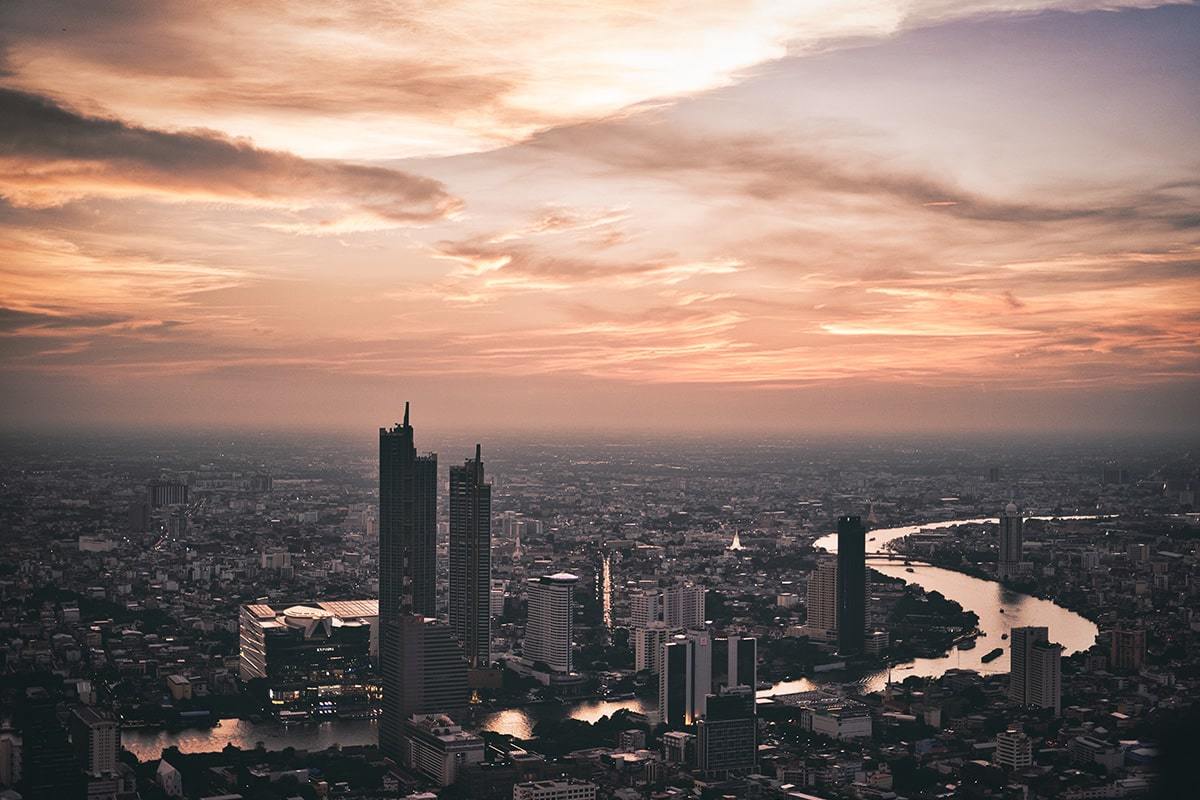
Dusit, a royal inspiration
During the reign of King Chulalongkorn, Rama V, Dusit, a former fruit orchard north of the royal island of Ratanakosin, was given a *farang-style make-over after the monarch’s return from a European tour. Dusit, ดุสิต,is the mythological name for the fourth of the Buddhist heavens or realms, but took its inspiration from what the King saw on his travels around Europe’s capital cities, with wide, tree-lined boulevards, shady walkways and canals. Built originally as a royal refuge from the heat and chaos surrounding the Grand Palace, it is still today the seat of power in Thailand, and a small haven of tranquillity in the bustling metropolis that is Bangkok.
*Farang– White-skinned foreigner.
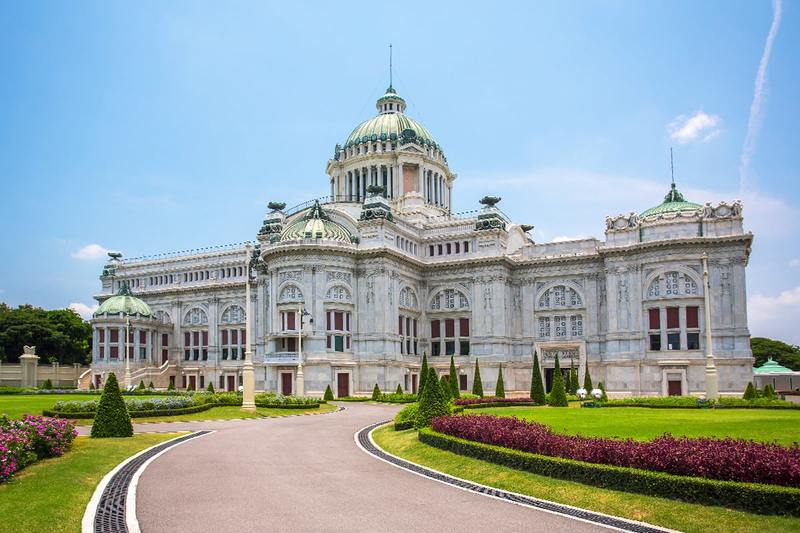
Dusit Palace
King Chulalongkorn, a man with a mission
Dusit is very much the creation of King Chulalongkorn and bears the stamp of his personality and the times in which he lived. Pressured by the colonial ambitions and commercial expansionism of the French in Indochina and the British in Malaya and Burma, he managed through skilful diplomacy and his knowledge and understanding of the prevailing political landscape to preserve Thailand’s independence largely intact, earning the titlePhra Piya Maharat, พระปิยมหาราช, the Great Beloved King, and today enjoys something of a cult status among Thais.
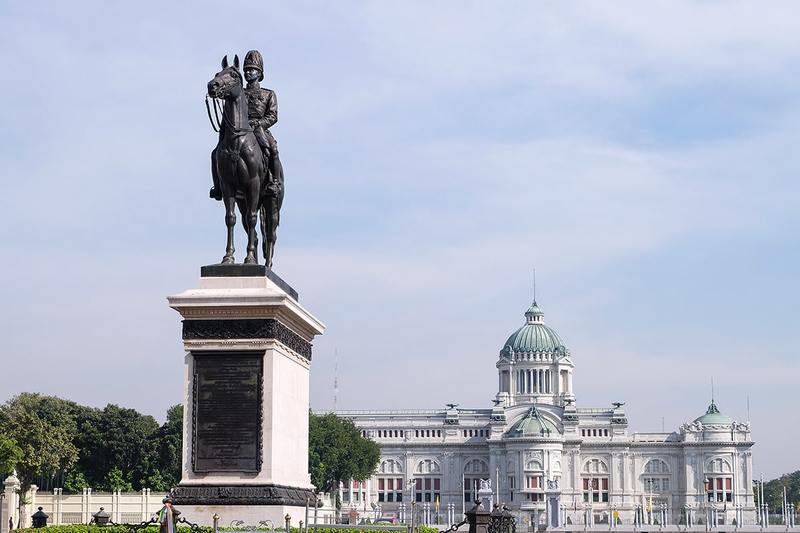
King Chulalongkorn, moderniser and reformer
A festival of commemoration
Each day of the year Bangkok’s Thai residents visit the fine equestrian statue of the King, resplendent in military uniform, located in the Royal Plaza. It has become something a shrine to his memory and many Bangkokians make merit by placing offerings of candles, incense, flowers and bottles of whiskey at the base of the statue. On October 23rdevery year a festival is held, Chulalongkorn Day, to commemorate the memory and achievements of the monarch credited with saving the kingdom from foreign colonisation (a source of great pride to Thais), the abolition of slavery and ushering in the modern age to Thailand. Thousands of visitors gather in the plaza, food vendor stalls appear and the strident blare of loudspeakers disrupts the district’s normally tranquil calm.
Dusit Palace Park
The major attraction of the area is the magnificent Dusit Park with its ornate, manicured gardens and architectural marvels. The park is home to Dusit Palace, within which are found the Vimanmek Teak Mansion, the Ananta Samakhom and Abhisek Dusit Throne Halls and Amphorn Sathan Residential Hall. Also within the park arethe Royal Elephant Museum, the Ancient Cloth Museum and King Bhumibol’s Photography Exhibition. Here the streets are wide and kept in pristine condition by an army of cleaners who work round the clock to maintain the area’s elegant demeanour.
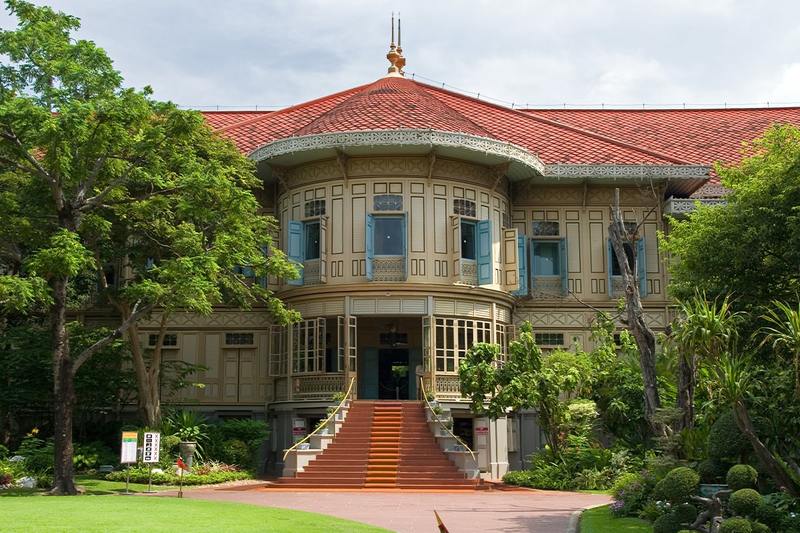
Vimanmek Mansion’s picturesque setting
The Vimanmek Mansion
The world’s largest teak building, constructed entirely without nails, the Vimanmek Mansion, reassembled in its present location in 1901, was the favoured refuge of King Chulalongkorn and his family while the Chitrlada Palace was under construction nearby and reserved for the King and women exclusively. At Queen Sirikit’s request the building was extensively restored and reopened in 1982 having falling into disrepair after its closing in 1935. Under its distinctive hexagonal roof the mansion has 81 rooms, including audience chambers, a music room, and the royal apartments, which house an exquisite porcelain collection, period furniture, an extensive collection of royal photographs and the first Thai alphabet typewriter. The building was the first in Thailand to have indoor bathrooms and electricity and the high ceilings, grand staircases and verandas lend it a Victorian air of grandeur.
Ananta Samakhom Throne Hall
Completed in 1915, the Ananta Samakhom Throne Hall is a royal reception hall within Dusit Palace, built in European style with a large central dome, almost 50 metres high dominating the six smaller domes. Inside the walls and ceilings of the domes are covered in paintings depicting the history of the Chakri Dynasty by the Itailan artists Galileo Chini and Carlo Riguli. Today the building, which once housed parliament, is used mainly for private functions and royal receptions.

The distinctively Moorish look of Abhisek Dusit Throne Hall
Abhisek Dusit Throne Hall
Built in 1904, the Abhisek Dusit Throne Hall, was used to receive foreign dignitaries and as a banqueting hall. It is a single storey is a stunning eclectic mix of Victorian-Moorish architecture with a Thai twist which since 1993 has housed the Support Museum, a showcase for traditional arts and crafts such as Kreung Thom, which creates beautiful art objects from thin silver sheets covered in gold, traditional handmade silverware and Khram, delicate floral designs with fine pieces of gold and silver beaten and stamped onto the surfaces of boxes or vases. Also on display are examples of silk from around the country, jewellery, woven Hill Tribe products, Talung, shadow drama puppets and sculptures representing the best of Thai artistry and craftsmanship.
Amphorn Sathan Residential Hall
The Amphorn Sathan Residential Hall is a distinctive blend of Art Nouveau and Second Empire architectural styles and is currently the primary residence of the reigning monarch, King Maha Vajiralongkorn, Rama X. Construction began in 1890 and was completed in 1906, becoming the residence of King Chulalongkorn until his death in 1910. It is familiar to most Thais as the venue for broadcasts of King Bhumbol’s regular Friday night jazz sessions with his band and notable jazz musicians. Ordinary people could ring in to make requests but no one knew that the King himself would answer the calls.
The Royal Elephant National Museum
Dedicated to the history of Thailand’s royal elephants, the Royal Elephant National Museum is a small but interesting museum housed in two buildings which were once stables for the king’s elephants. The museum features life-size models displaying the traditional paraphernalia used in royal ceremonies, photographs, and displays illustrating the history and significance of elephants in Thai culture, particularly the highly prized white elephants.
Wat Benchamabophit
Commissioned in 1899 by King Chulalongkorn, Wat Benchamabophit, also known as the Marble Temple, was designed by the King’s half-brother, Prince Narisara Nuwattiwong. This magnificent temple was built using Carrara marble imported from Italy and features Victorian-style stained glass windows showing scenes from Thai mythology. Within the temple complex are 53 Buddha images depicting every mudra, gesture, and style of Thai Buddhist iconography.
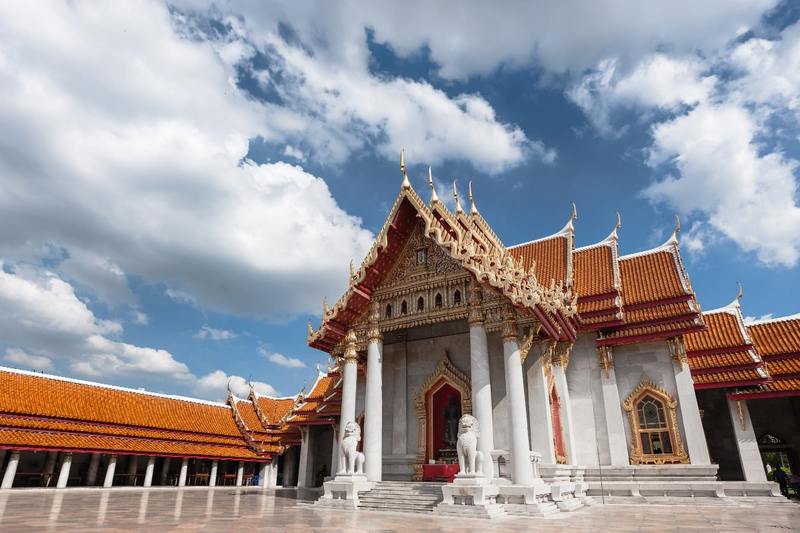
The marbled magnificence of Wat Benchamabophit
Wat Thewarat Kunchorn Worawihan
One of the most striking temples in Bangkok, Wat Thewarat Kunchorn Worawihan occupies a picturesque location alongside the Chhao Phraya River and is a stunning architectural achievement which began construction during the reign of Rama I (1782-1809). Not as well-known as many other temples in Bangkok it offers a quiet refuge from the crowds and time for peaceful contemplation of the artistry and quiet majesty of this splendid temple.
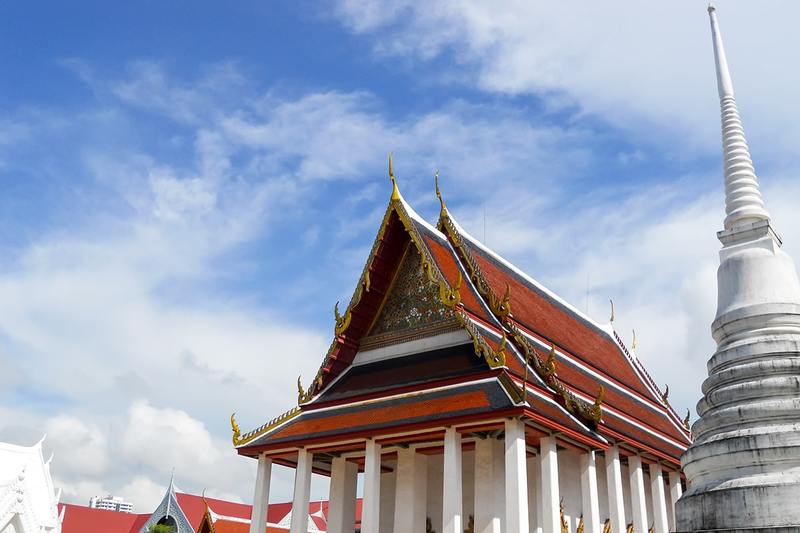
Far from the madding crowds, Wat Thewarat Kunchorn Worawihan’s tranquil refuge
Christian churches in Dusit
There are a number of Christian churches in Dusit well worth taking a look at. The St Francis Xavier Church, near the Krung Thon Bridge, dates from the 1850s and a little to the south is the Church of the Immaculate Conception, built in 1837. Behind this is a museum which was the original church first erected in 1675, during the reign of King Narai.
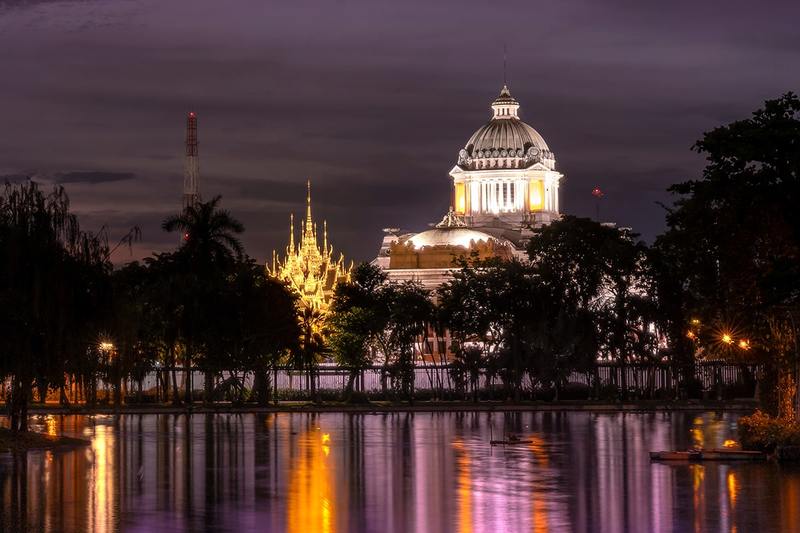
Dining out in Dusit with a view of Ananta Samakhom Throne Hall
Dining out after a day out
Although relatively unknown to most tourists, the restaurants in Dusit offer some truly authentic Thai food, ranging from the very posh, upscale dining experience such as that offered by Chon Thai restaurant, located in a pair of century old teak houses, formerly owned by Jim Thompson, the Thai silk magnate, to family run enterprises like Kaloang Home Kitchen. If spicy Thai is not to your taste the Seven Spoons has Mediterranean-inspired meals using locally grown organic produce, after which you might like to saunter a short distance down to the Mad Moa, the only Polynesian tiki bar in Bangkok to grab some American-style fare. Vegetarians and vegans only need head to May Kaidee’s to sample any of over fifty dishes. The food choices in Dusit are as interesting as the place itself, which offers a welcome break from the frenetic pace, noise and noxious air in Bangkok, a place to unwind in clam tranquillity and old-world charm.










of collaborative energy




Before proceeding to use the website please carefully ready our Terms and Policies
I accept Diwerent's Terms and Conditions and Privacy Policy










